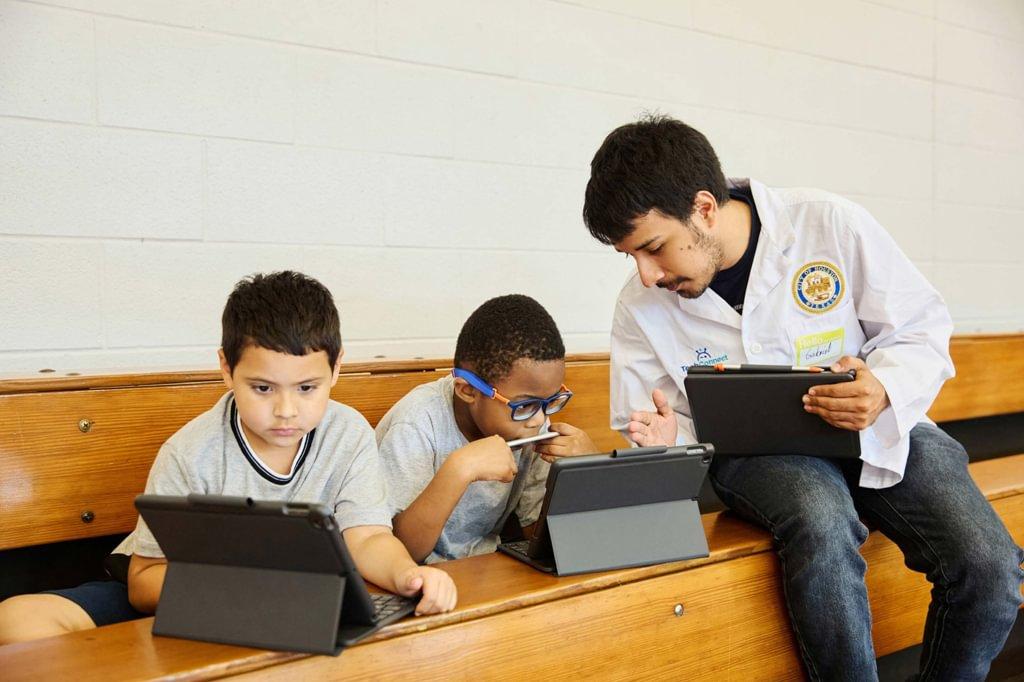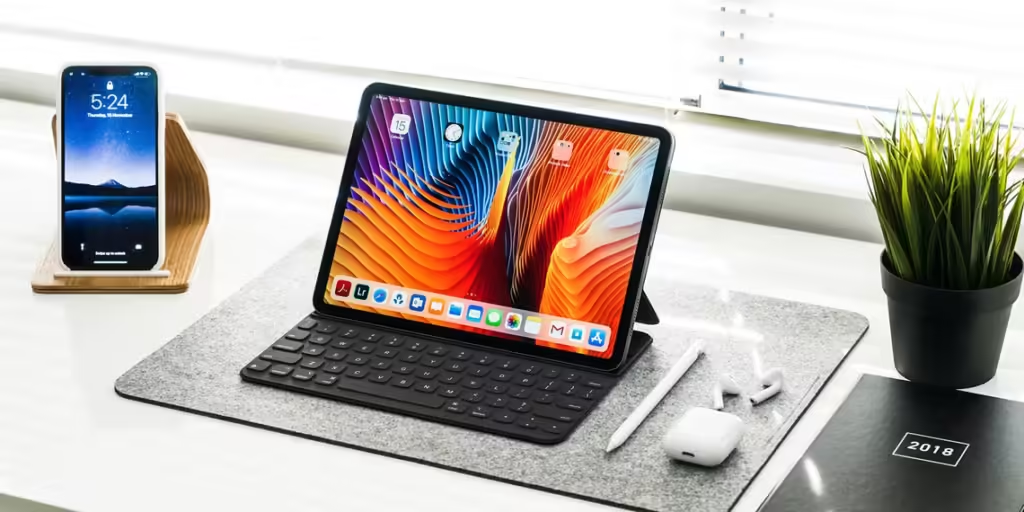Technology is pivotal in learning environments that constantly adapt and evolve, and Apple is at the forefront. The Cupertino company has influenced the sector thanks to its range of devices tailored to all levels of education, from iPads for young learners to advanced MacBook Pro models employed in university settings for computer science and engineering.

APPLE AND EDUCATION
Apple’s commitment to education is evident through its tailored products and educational programs. Statistics show a strong preference for Apple products among students, particularly in the United States, where 71% of college students preferred the Mac. The MacBook Air, first launched in 2008, exemplifies this trend with over 10 million units sold, owning a 9.6% market share among all Mac models in the same year.
The popularity of Apple devices in educational settings can be attributed to their reliability, ease of use, and the ecosystem they offer, fostering a seamless integration of technology and education. iPads, on the other hand, have become key players in early education, transforming traditional learning methods and introducing interactive and engaging ways to stimulate cognitive development in young learners.
With applications designed for young children, iPads offer a gateway to the world of letters, numbers, and basic science through fun and interactive games. These applications are not just games but structured educational tools designed to enhance motor skills, reading ability, and basic arithmetic from an early age. For instance, apps like “Endless Alphabet” and “Toca Boca” provide playful learning experiences that captivate children’s imaginations while educating them.

The tactile nature of iPads, combined with colorful and responsive interfaces, makes learning appealing and accessible even on the playground and is transforming how schools teach children the basics.
As students progress to primary and secondary education, Apple devices’ educational capabilities grow. Applications expand into more complex subjects such as chemistry and physics. Apple’s ecosystem supports a variety of educational tools that cater to different learning styles, including visual, auditory, and kinesthetic methods.
Programs like Apple’s “Everyone Can Code” initiative demonstrate how iPads and MacBooks can teach coding early, enhancing problem-solving skills and preparing students for future careers in technology and engineering. The “Everyone Can Code” program encompasses apps, tools, and resources, guiding students through Swift Playgrounds. This app teaches coding to kids through a world of interactive puzzles and playful characters. It’s excellent for students aged eight and over, introducing coding in the same language professional app developers use.

APPLICATIONS FOR LEARNING
Apple’s hardware might be the most critical piece of hardware in the classroom, but it’s third-party developers that count. The App Store means every student can find a tool that resonates with their study habits.
- Evernote -Evernote remains a staple for students who juggle multiple subjects, offering an easy-to-use platform for note-taking and organization. With features allowing users to integrate images, links, and tables into their notes, Evernote makes revising and retrieving information straightforward. Its ability to sync across all devices ensures that notes are accessible anytime, anywhere, making it ideal for students on the go.
- Khan Academy– On the other hand, continues to be a favorite for students who need to reinforce their understanding of complex subjects like mathematics, science, and economics. This free resource offers practice exercises, instructional videos, and a personalized learning dashboard that empowers learners to study at their own pace.
- Quizlet-Quizlet is another tool that’s popular in the classroom, paving the way for students to revise by enabling them to create digital flashcards. These can be used to memorize vocabulary, historical dates, formulas, and more. The app also includes games and tests to make learning interactive and fun. Quizlet’s ability to share flashcards with others makes it a popular choice for collaborative study sessions.
- Wolfram Alpha-For students in higher education, particularly those dealing with advanced mathematics or engineering, Wolfram Alpha is an indispensable tool. This app acts as a ‘computational knowledge engine’ that cansolve equations, graph functions, and even generate answers to complex questions across a variety of topics. It’s an excellent resource for checking homework and understanding step-by-step solutions.
- Forest -Forest offers a creative solution to keep students focused. This app helps students stay off their smartphones and concentrate on their studies by letting them plant a virtual tree that grows as long as the app runs undisturbed. Suppose they leave the app to check social media or texts; the tree wilts. It’s a visual and interactive way to combat procrastination and builds upon the in-built tools on macOS and iOS for productivity.

MAC IN HIGHER EDUCATION
In university settings, the demands on technology become even more rigorous, requiring devices that can handle complex computations and simulations. The MacBook Pro, known for its powerful processing capabilities, has become a crucial tool for students and professionals in architecture, engineering, and medicine.
Advanced software for simulations, which are essential in disciplines like physics and engineering, runs efficiently on MacBook Pro models. These simulations allow students to visualize and manipulate complex systems, providing a deeper understanding of the subjects.
For architecture students, software like AutoCAD and Rhino, which demand significant computational power, perform optimally on these devices, facilitating the design and modification of intricate architectural models.

Apple continues to push the boundaries of educational technology with the introduction of the Apple Vision Pro. This new device is set to revolutionize how educational content is delivered and interacted with. The Apple Vision Pro offers an immersive experience that could transform medical education among other fields, by allowing students to participate in virtual dissections and surgical procedures, providing a depth of previously unattainable learning.
Granted, the technology is in its infancy right now, and sales are slower than some had expected, but in the years ahead, Apple Vision could become a frontier in the world of education and training.




